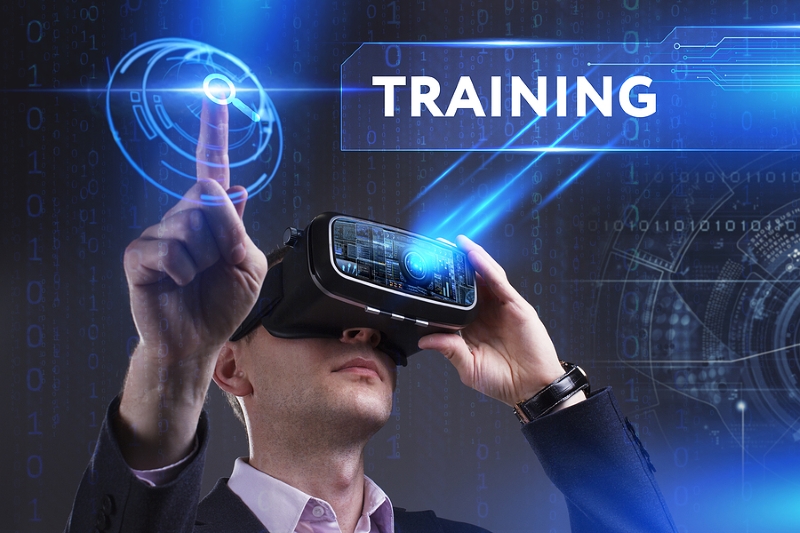The U.S. government was an early adopter of virtual reality (VR) technology. The military used simulation technologies for flight training and then later for combat preparations. While virtual and augmented reality continue to evolve and provide valuable training for soldiers dealing with complex machinery and dangerous situations, VR is also proving to be a valuable tool for various training programs across government. In fact, studies show that information retention rates were 75% with VR as compared with 10% for reading and 5% for lectures. With these results, training is becoming more interactive across the board.

Training the Mental Side of the Battle
VR is extending beyond physical simulations to also assess “human performance” — the combined physical and cognitive actions and reactions of soldiers. Putting people in virtual reality situations and monitoring their physiology with wearable sensors can provide data that can be used to develop a holistic, personalized training program to enhance performance. For example, during a VR simulation, wearables collect data responses to stress, such as heart rate variability and pain levels. That information can be combined with data on current fitness habits as well as results from cognitive assessments like short-term memory, long-term memory, and auditory recall. Combined, all of this data gives military leaders a comprehensive snapshot into their warfighters’ cognitive and physical readiness, allowing for more precise training and assignments.
Improving Customer Service
With customer experience and citizen trust a key focus of every agency, VR is providing a way to test new approaches and upskill employees to meet the needs of today’s government “customers.” VR creates an opportunity to practice high-stakes or highly emotional conversations in a realistic and safe environment.
The child services office in Montgomery County, Ohio, has been using VR to train its caseworkers. The training provides a scenario to allow a caseworker to interact with a family in its home to learn how to read nonverbal cues and practice de-escalating tense situations. A version of this scenario can also help caseworkers recognize their own hidden biases by swapping out actors of different ethnicities. Police departments are using similar scenario-based training to aid with de-escalation tactics.
Making Training Interactions More Real
VR is being used to create more engaging and realistic teambuilding and communication training exercises. Imagine instead of sitting through lectures on best practices for collaboration and doing a couple of icebreakers, you and your colleagues are transported to Mars and have to work together to escape a robot army. Following the VR exercise, the team can discuss what went well and what failed, discovering new ways to work together in the more typical challenges of the day.
VR is also helping improve the implementation of diversity training. The Air Education and Training Command’s Leading Inclusively Virtual Experience (LIVE) program includes a virtual reality experience that uses a combination of interactive scenarios with real-time dialogue to challenge individuals to engage in difficult diversity, equity, inclusion, and accessibility conversations.
The use of VR combined with artificial intelligence and machine learning is providing a more realistic way for employees to practice interactions and learn how they’ll react in the real world. With access to virtual scenarios, employees can be better prepared for real-world challenges.
As the founder of GovEvents and GovWhitePapers, Kerry is on a mission to help businesses interact with, evolve, and serve the government. With 25+ years of experience in the information technology and government industries, Kerry drives the overall strategy and oversees operations for both companies. She has also served in executive marketing roles at a number of government IT providers.





Leave a Reply
You must be logged in to post a comment.